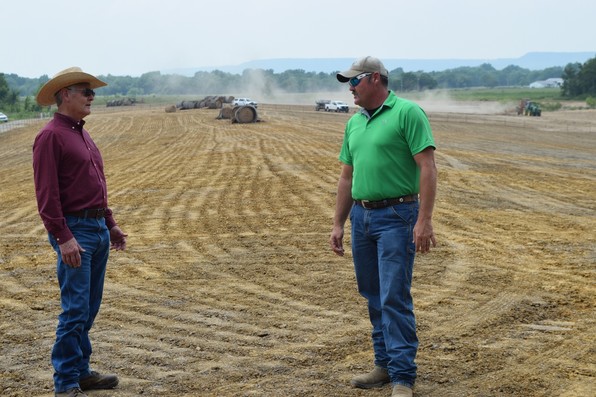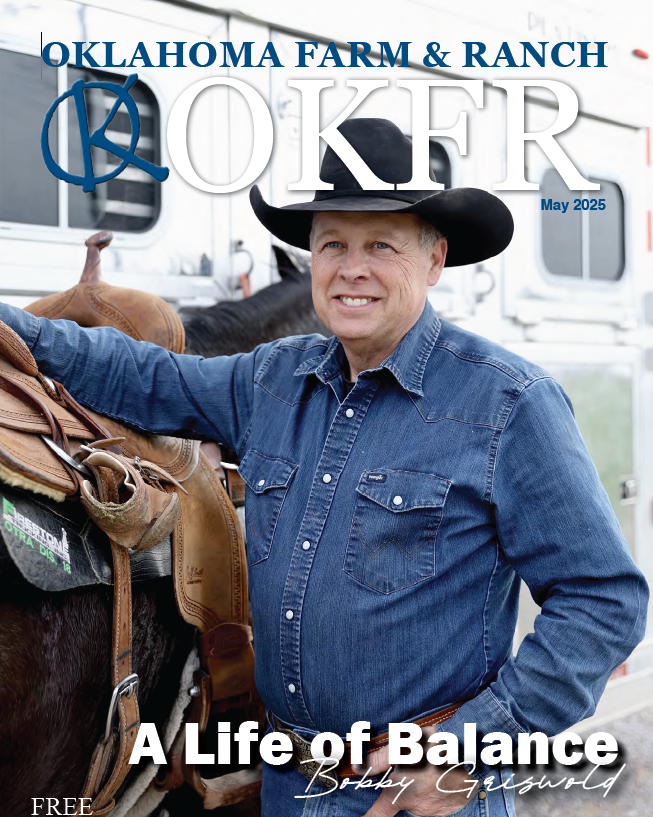Farm & Ranch
Recently Completed Reclamation Project is Excellent Example of Abandoned Mine Land Work in Oklahoma
Some believe you can’t go back in time.
However, that’s exactly what the Abandoned Mine Land Reclamation Program does. In this case, they’ve returned nearly 24 acres to productive use that were surface mined for coal over 45 years ago.
Construction on the Owen-Cherokee West Abandoned Mine Land Reclamation project in the Muskogee County Conservation District reached completion on July 20 and two days later the Final Inspection of the Project in eastern Oklahoma was held. The concluding phases of the project included: the final grading stage of earth work, the installation of rip rap, rock check dams, and fencing. A dangerous highwall and a hazardous waterbody have been removed from the site. This project is in a highly visible location at an intersection with heavily traveled county roads. The property has been dramatically improved, and the landscape conforms to the natural environment with the elimination of significant health and safety hazards. Approximately 23.5 acres of land have been reshaped and reclaimed.
Robert Toole, Oklahoma Conservation Commission Abandoned Mine Land Reclamation Program Director, said this project is a good example of AML work in various ways.
From a technical standpoint, the Oklahoma AML Program secured the right-of-entry for the private property needed for the project. They then designed the plans, coordinated the environmental clearances, contracted the second American Burying Beetle survey, contracted the construction, inspected construction, prepared the vegetative plan, coordinated the vegetative services and inspected the vegetative treatment application.
From a partnership standpoint, the Surface Mining Control and Reclamation Act of 1977 (SMCRA) established a cooperative federalism approach to abandoned coal mine reclamation.
Toole said, “This project is a prime example of how well that approach works to address abandoned mine land reclamation on any land in Oklahoma.”
The project was a partnership effort involving the Cherokee Nation, the Office of Surface Mining Reclamation and Enforcement, the Oklahoma Conservation Commission, the Muskogee County Conservation District and private landowners.
The work area involved Cherokee Nation abandoned mine land that needed maintenance for which the Office of Surface Mining Reclamation and Enforcement (OSMRE) was providing technical assistance.
“The maintenance treatment necessary to alleviate the problems required the involvement of adjacent private property abandoned mine land for which the Oklahoma AML Program had authority to reclaim,” Toole said. “Through a Cooperative Agreement, the OSMRE coordinated the involvement of the Cherokee Nation land and the Oklahoma AML Program coordinated the inclusion of the private property land. Funding was jointly provided by OSMRE for the Cherokee Nation land acreage and by the Oklahoma AML Program for the private land acreage.”
Toole added, “In collaboration with OSMRE, the Oklahoma AML Program designed the Cherokee Nation land maintenance treatment in coordination with the abandoned mine land reclamation of the private land to create a contiguous work area that addressed the needs of all interests to the maximum extent possible.”
The Oklahoma AML Program then performed all project management including contracting, construction inspection and vegetative treatment oversight. The Muskogee County Conservation District served as the vegetative contractor to secure the best vegetative services available. This cooperative project involved the federal government, state government, local government, tribal government and private landowners.
“It doesn’t get much more partnership than that and yet it worked very efficiently and effectively with the Oklahoma AML Program coordinating communications, input and project management,” Toole said.
Those who participated in the final inspection at the site included: Butch Garner, Muskogee County Conservation District Chair; Pat Gwin, Cherokee Nation; LaChelle Harris, OSMRE Tulsa FO; Lee Owens, landowner; Valerie Rogers, OCC-AML Engineer; Tracy Reeder, OCC-AML Construction Supervisor; Trampas Tripp, OCC-AML Program Assistant/Project Inspector, and Toole, OCC-AML Program Director.
Discussions between AML and OSMRE about this project began in 2017, and the Cooperative Agreement was executed the following year (2018). The notice to begin construction was given on January 5, 2021 and was completed in July.
This reclamation project was part private landowner and part Cherokee Nation land.
Such projects afford many opportunities for producers, sometimes it is business related, sometimes it is more quality of life. Owens, the private landowner, said a neighbor cuts the hay on her land and this will provide more land for that use. Plus, the reclamation opens the door for use by her grandchildren as they make memories.
“This was a wooded area before, but now this gives us easier access to my other acreage for the grandkids to go fishing,” she said, followed by a big smile.
The AML mission
The mission of Oklahoma’s Abandoned Mine Land Reclamation Program is to protect lives, repair scarred land and improve the environment. Twenty-six (26) known deaths have occurred in the state on abandoned coal mines. Oklahoma has over $120 million in reclamation that needs to be addressed and receives only $3 million per year. The authority provided by the Surface Mining Control and Reclamation Act of 1977 as amended to collect fees to fund AML reclamation expires in September 2021. If the Act is not reauthorized, Oklahoma will have millions of dollars of hazardous abandoned coal mine sites left unreclaimed.
AML achievements to date includes: 187 completed projects; 5,520.7 acres reclaimed; 320,048 linear feet of dangerous highwall reclaimed; 258 hazardous water bodies reclaimed; 223 subsidence sites reclaimed; 22 hazardous structures removed; 397 mine openings closed; 16 miles of clean streams restored.
Looking back
Coal mining started in Oklahoma in 1872, taking place primarily in a 16-county area on the eastern side of the state. Early production came almost entirely from underground mines, but with the development of larger power equipment, surface mining became the preferred approach and continues to be the primary mining method used in the state. Over 32,000 acres of land have been used for surface mining and another 40,000 acres have been used for underground mining, resulting in many abandoned mining sites that threaten the environment as well as Oklahomans’ health and safety.
For years, conservation district directors in eastern Oklahoma voiced their concerns about these unclaimed mined areas and spoke to local lawmakers about legislation to address the issue. This advocacy led to the passage of the Open Cut Land Reclamation Act in 1968, which required leveling only the tops of spoil ridges to a width of 10 feet, a requirement that many deemed inadequate. In 1971 these reclamation guidelines were strengthened to require “a rolling topography traversable by machines or equipment commonly used with the land after reclamation.” Still dissatisfied by this requirement, conservation district directors and other environmental advocates turned to Congress for assistance in passing more robust mine reclamation legislation.
On August 3, 1977, President Jimmy Carter signed Public Law 95-87, known as the Surface Mining Control and Reclamation Act of 1977. This legislation created a national system for controlling the surface effects of active coal mining and established a trust fund dedicated to reclaiming hazardous orphan coal mine land. The trust is funded by fees on active coal mining that are set to end in 2021.
Within months of Public Law 95-87 passing, Governor David Boren designated the Oklahoma Conservation Commission as the state agency responsible for reclaiming abandoned coal mine land in Oklahoma. On May 19, 1981, Governor George Nigh signed Senate Bill 217 implementing the Abandoned Mine Land (AML) Program in Oklahoma, which was subsequently approved by Cecil Andrus, the Secretary of the U.S. Department of the Interior at the time. Oklahoma is one of the few states where conservation districts are integrally involved with AML reclamation efforts. These efforts are 100 percent federally funded from fees on active coal mine production.
Take for example, projects of the past…
There have been many other successes through the years. Here are a couple of those:
The Lindsay AML Project is located near Claremore, Oklahoma, close to the Oologah Reservoir in Rogers County. A 50-foot final-cut highwall and pit paralleled the road to the reservoir. With considerable residential development in the area, there was a strong potential for an accident. The pit was backfilled using the on-site spoil piles, eliminating 2,700 linear feet of highwall. A total of 37 acres was reclaimed at a cost of $227,114. The project was completed August 12, 1992.
The Bill Tipple Civil Penalty Project is adjacent to Highway 10 near Welch, Oklahoma, in Craig County. The site was an abandoned coal-processing facility with many dilapidated structures and equipment creating safety hazards. The presence of approximately 15,000 cubic yards of acid-forming surface coal refuse posed a major threat to the underlying groundwater aquifer as well as a public health hazard. The site was eligible for funding under the federally administered civil penalty program. Hazardous structures and equipment were either salvaged or buried. The coal refuse was buried with a minimum 2-foot clay cover. A total of 55 acres was reclaimed at a cost of $201,285.70. It was completed August 26, 1993.
Of the Owen-Cherokee West Reclamation project, Toole said, “This project is a model for performing abandoned coal mine land reclamation on any land in Oklahoma through the Oklahoma Conservation Commission Abandoned Mine Land Reclamation Program.”
Farm & Ranch
Cattle Nematodes (Worms)
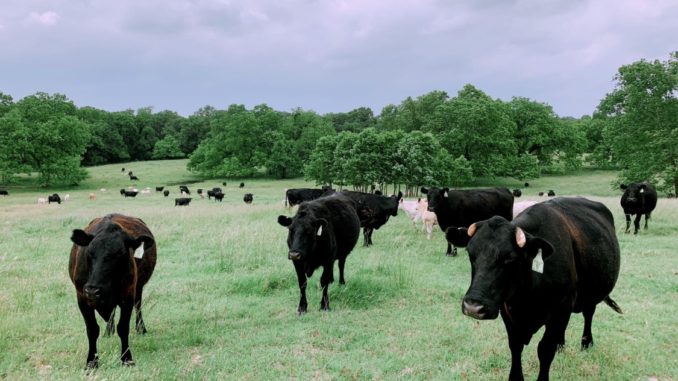
Barry Whitworth, DVM | Senior Extension Specialist | Department of Animal & Food Sciences
According to the Mesonet, Oklahoma received some much-needed rain in late April (2023). With the moderate temperatures and high humidity, the environment is perfect for the proliferation of gastrointestinal nematodes (GIN) which are commonly called “worms.” Cattle can be infected with a variety of GIN. Most do not cause issues unless husbandry practices are poor. However certain GIN have been associated with disease. The most pathological GIN in cattle is Ostertagia ostertagi. Cooperia species and Haemonchus species are two that have been implicated with production issues. Control of these parasites is constantly changing due to environment, anthelmintic (dewormer) resistance, and consumer preference. Cattle producers should develop a plan to manage these parasites.
In order for GIN to complete their life cycle, certain environmental conditions must exist. The development stage begins with passing of the egg in the feces of the animal. If the egg is to hatch, the temperature must be warm and the humidity needs to be close to 100%. Ideal temperature ranges from 70⁰ to 80⁰ Fahrenheit (F), but any temperature above 45⁰ F will allow for development. Temperatures above 85⁰ F or below 45⁰ F will begin to hamper development. Humidity needs to be 80% or higher.
Once the egg hatches, the larva goes through a couple of molts to reach the infective stage which is the third stage larva (L3). L3 must have moisture to free itself from the fecal pat. Once free, it rides a wave of water on to a blade of forage. Once ingested, this begins the prepatent or pre-adult stage. Two molts take place during this stage (L3 to L4 and L4 to L5). If conditions are not favorable for survivability of offspring, L4 will go into an arrested development stage (hypobiosis) for a period of time. The patent or adult stage is the mature breeding adult.
Once inside the body, the parasite will migrate to certain locations in the digestive tract. For example, O. ostertagi develop in the gastric gland in the abomasum. H. placei and H. contortus will migrate to the abomasum. Cooperia species will live in the small intestine. A few like Trichuris (whipworms) are found in the large intestine.
Clinical signs of parasitism vary according to the species of parasite, burden, and site of attachment. Severe disease, which is referred to as parasitic gastroenteritis (PGE), with internal parasites is unusual with today’s control methods. Clinical signs of PGE are lack of appetite, weight loss, weakness, diarrhea, submandibular edema (bottle jaw), and death. However, most parasite infection are subclinical which means producers do not see clinical signs of disease. In subclinical infections, the parasite causes production issues such as poor weight gain in young cattle, reduced milk production, and lower pregnancy rates.
Producers should be monitoring their herds for parasites throughout the year but especially in the spring when conditions are ideal for infection. A fecal egg count (FEC) is a good way of accessing parasite burdens. Livestock producers need to gather fecal samples from their herd periodically. The samples should be sent to their veterinarian or a veterinary diagnostic lab. Different techniques are used to access the number of eggs per gram of feces. Based on the counts, the producer will learn the parasite burden of the herd. Producers can use this information to develop a treatment plan.
In the past, GIN control was simple. Cattle were routinely dewormed. Unfortunately, anthelmintic resistance has complicated parasite control. Now proper nutrition, grazing management, a general understanding of how weather influences parasites, biosecurity, refugia, anthelmintic efficiency, and the judicious use of anthelmintics are important in designing an effective parasite management program. All of these considerations need to be discussed in detail with a producer’s veterinarian when developing a plan for their operation.
Cattle producers need to understand that parasites cannot be eliminated. They must be managed with a variety of control methods. Designing a parasite management plan requires producers to gain a general understanding of life cycle of the parasite as well as the environmental needs of the parasite. Producers should use this information as well as consult with their veterinarian for a plan to manage GIN. For more information about GIN, producers should talk with their veterinarian and/or with their local Oklahoma State University Cooperative Extension Agriculture Educator.
References
Charlier, J., Höglund, J., Morgan, E. R., Geldhof, P., Vercruysse, J., & Claerebout, E. (2020). Biology and Epidemiology of Gastrointestinal Nematodes in Cattle. The Veterinary clinics of North America. Food animal practice, 36(1), 1–15.
Navarre C. B. (2020). Epidemiology and Control of Gastrointestinal Nematodes of Cattle in Southern Climates. The Veterinary clinics of North America. Food animal practice, 36(1), 45–57.
Urquhart, G. M., Armour, J., Duncan, J. L., Dunn, A. M., & Jennings, F. W. (1987). In G. M. Urquhart (Ed). Veterinary Helminthology. Veterinary Parasitology (1st ed., pp 3-33). Longman Scientific & Technical.
Farm & Ranch
The Value of Vitamin A
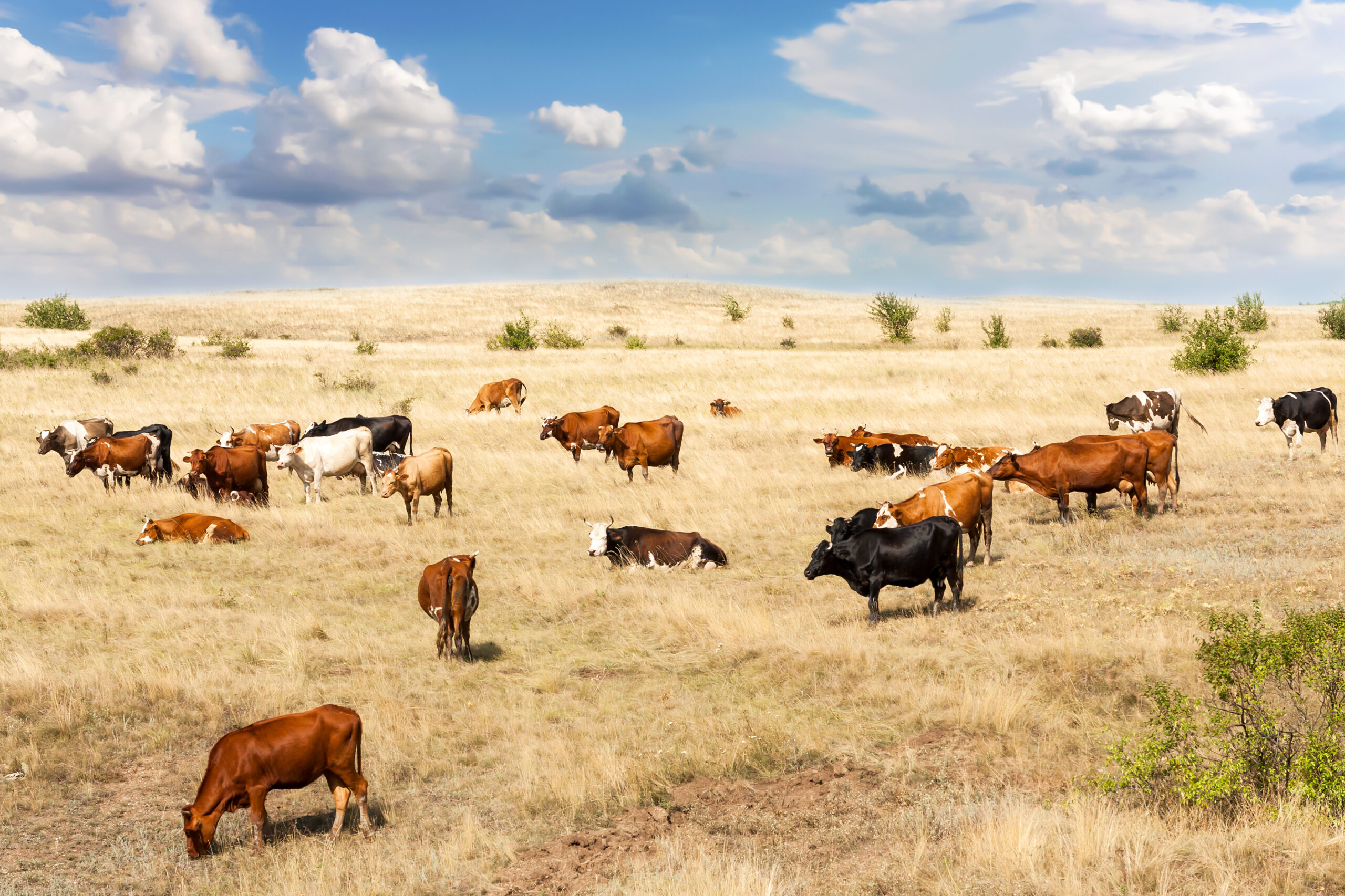
Barry Whitworth, DVM – Area Food/Animal Quality and Health – Specialist for Eastern Oklahoma
A ranch in Australia experienced an abnormally high number of stillbirths and weak born calves in 2004-2005. An investigation revealed that the usual infectious causes were not the problem. After additional testing, veterinarians diagnosed low levels of vitamin A as the cause.
According to Dr. Greg Hanzlicek, with the Kansas State Veterinary Diagnostic Laboratory (KSVDL), Kansas had an unusually high number of stillbirth cases and weak born calves in the spring of 2019. After many laboratory tests, it was concluded that the problem stimmed from a lack of energy, protein, Vitamin A, or combinations of all of these.
Both of the above examples demonstrate the importance of vitamin A in reproductive efficiency. Research has shown that low vitamin A levels during pregnancy are associated with abortions, stillbirths, and weak born calves. In addition to playing an important role in reproductive efficiency, vitamin A is essential for vision, bone growth, and maintaining epithelial tissue such as skin and hooves.
Animals obtain vitamin A from consuming green forage and/or the addition of vitamin A supplements to the diet. Lush green pastures contain high amounts of vitamin A. As plants mature and during times of drought, the amount of vitamin A decreases. The ranch in Australia experienced below average rainfall in the previous two years prior to the calving season. During the calving season, rainfall was below average with very dry conditions and little green forage was available.
In general, animals obtain adequate amounts of vitamin A by grazing green forage. Animals grazing green pastures will build a healthy store of vitamin A in the liver. When vitamin A is in short supply, the stores in the liver prevent deficiencies. According to Dr. Lalman, Extension Beef Cattle Specialist Oklahoma State University, the stores should last 2 to 4 months during times of deficiency. During times when green forage is not available, vitamin A supplements need to be added to the diet to prevent deficiencies.
When vitamin A levels are deficient, night blindness is one of the earliest clinical signs. Other eye issues include clouding of the cornea, ocular discharges, and possible ulcerations. Skin issues found when levels of vitamin A are deficient include a dry rough coat, scales on the skin, and dry cracked hooves. Other neurological signs include incoordination or gait problems. Seizures may occur due to the increase cerebrospinal fluid pressure. Birth defects have also been attributed to low vitamin A levels.
Animals displaying vitamin A deficiency should be treated immediately with vitamin A injections. If treated early, response is usually rapid and complete. However, delaying treatment may result in irreversible damage. Even with treatment, cattle with vision impairment due to vitamin A deficiency may not regain their sight.
Preventing Vitamin A deficiency depends on producers being attentive to the environmental conditions that favor low vitamin A levels in forage. During these times, producers need to supplement the diet with vitamin A. Producers need to be aware that Vitamin A supplements degrade rapidly, so vitamin A supplements should not be stored for long periods of time. In addition to vitamin A supplementation, research indicates that diets low in protein result in poor absorption of vitamin A. It is important that producers ensure that the rations have sufficient protein levels. Lastly, since colostrum contains high levels of vitamin A, producers need to ensure that newborns obtain adequate amounts of colostrum at birth.
Similar to the Australian example, most of Oklahoma had below average rainfall for the year of 2022. This resulted in pasture quality decreasing earlier than normal. Due to this year’s lack of green forage, liver stores of vitamin A may be inadequate for the animal’s needs. Producers need to ensure that the diets of their cattle have adequate amounts of vitamin A, energy, and protein. For more information about Vitamin A, producers should contact their veterinarian and/or visit with their Oklahoma State University County Ag Educator.
References
Hanzlicek, G. (2019, May). Difficult Calving Season Findings:2019. Diagnostic Insights. www.ksudl.org/resources/news/diagnostic_insights/may2019/difficult-calving-season2019.html.
Hill, B., Holroyd, R., & Sullivan, M. (2009). Clinical and pathological findings associated with congenital hypovitaminosis A in extensively grazed beef cattle. Australian Veterinary Journal, 87(3), 94–98.
Parker, E. M., Gardiner, C. P., Kessell, A. E., & Parker, A. J. (2017). Hypovitaminosis A in extensively grazed beef cattle. Australian veterinary journal, 95(3), 80–84.
Farm & Ranch
Lice in Cattle
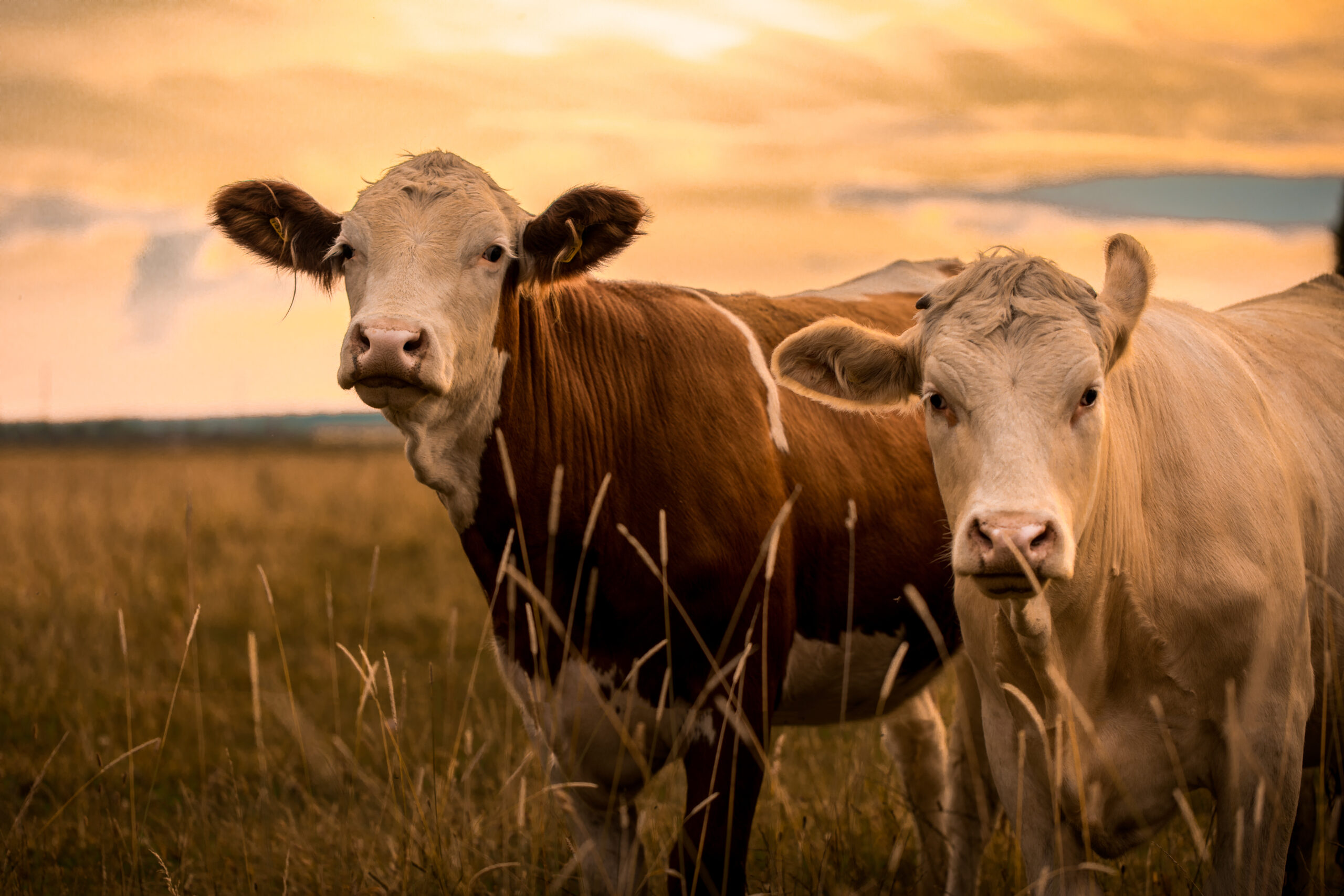
Barry Whitworth, DVM, MPH | Senior Extension Specialist
Department of Animal & Food Sciences | Freguson College of Agriculture | Oklahoma State University
Cattle lice cost Oklahoma cattlemen millions of dollars each year in decreased weight gains and reduced milk production. If cattle producers have not treated their cattle for lice this fall, they need to consider what type of lice control to initiate. This is especially true for cattle producers that had problems in the previous year. Cattle producers should monitor cattle closely during the months of December, January, and February. Producers should not wait until clinical signs appear before beginning treatment.
The life cycle of the different species of cattle lice are very similar. The life cycle begins with the female louse attaching her egg to a shaft of hair. The egg will hatch as a small replica of the adult. After several molts, the adult will emerge. The cycle takes around 3 to 4 weeks to complete. These newly hatched lice will spend their entire life on the host and are host specific which means cattle cannot be infected with lice from other animals.
Small numbers of lice may be found on cattle in the summer, but high populations of lice are associated with cold weather. Since cattle tend to be in closer proximity to each other in the winter, lice can spread easily between cattle. A small percentage of cattle tend to harbor larger numbers of lice. These animals are sometimes referred to as “carrier animals”, and they may be a source for maintaining lice in the herd. As with many other diseases, stress also contributes to susceptibility and infestation.
Signs of lice infections in cattle are hair loss, unthrifty cattle, and hair on fences or other objects. If producers find these signs, they may want to check a few animals for lice. They can check for lice by parting the hair and observing the number of lice per square inch. If an animal has 1 to 5 lice per square inch, they are considered to have a low infestation. Cattle with 6 to 10 lice would be considered moderately infested. Any cattle with more than 10 lice per square inch are heavily infested.
Cattle have two types of lice. One type is the biting or chewing louse. These lice have mouth parts that are adapted to bite and chew the skin. The second type is sucking louse. These lice have mouth parts that will penetrate the skin and suck blood and other tissue fluids. It is not uncommon for cattle to be infested with more than one species of lice.
The biting or chewing louse is Bovicola (Domalinia) bovis. This type of lice feeds on hair, skin, skin exudate, and debris. Typical clinical signs with this type of louse are hair loss, skin irritation and scabs on the skin. They are found on the shoulders and back.
Four types of sucking lice can be found in the United States. The first is the “short nose” louse or Haematopinus eurysternus. This is the largest cattle louse. This louse is found on the neck, back, dewlap, and base of the tail. The second is the “long-nose” louse or Linognathus vituli. This louse is bluish in color with a long slender head. This louse is found on the dewlap, shoulders, sides of the neck, and rump. The third is the “little blue” louse or Solenoptes cappilatus. This louse is blue in color and is the smallest cattle louse. This louse is found on the dewlap, muzzle, eyes, and neck. The last is the “tail” louse or Haematopinus quadripertuses. This louse has been found in California, Florida, and other Gulf Coast States. This louse is found around the tail.
The sucking lice have the potential to cause severe anemia if the numbers are high. This can result in poor doing cattle or in extreme cases death. They also can spread infectious diseases. The long-nose louse has been found to be a mechanical vector for anaplasmosis.
Prevention of lice infestation should begin in the fall. Producers should not wait for clinical signs to appear before beginning treatment. Several products are available to control lice. Producers should read and follow the label directions. Producers should keep in mind that many of the lice control products require two administrations to control lice. Failure to do this may result in cattle having problems with lice infestations.
Some producers have complained that some products do not work. These complaints have not been verified; however, this is a good reason to consult with a veterinarian for advice on what products to use. Most treatment failures are associated with incorrect application not resistance. Proper application of Pour-On insecticides is to administer from the withers to the tailhead. Also, the proper dose is essential for good control.
Cattle producers need to consider a few other things in lice control. Since cattle in poor body condition are more prone to lice infestation, producers need to be sure that the nutritional needs of their cattle are being met. Cattle that have a history of lice infestations should be culled. Lastly, any purchased cattle need to be inspected for lice before entering the herd. If lice are found, the animals should be isolated and treated before entering the herd.
If producers would like more information on lice in cattle, they should contact their local veterinarian or Oklahoma State University County Extension Agriculture Educator. They may also want to read Oklahoma Cooperative Extension Fact Sheet Beef Ectoparasites VTMD-7000 at https://extension.okstate.edu/fact-sheets/beef-cattle-ectoparasites.html.
-

 Attractions8 years ago
Attractions8 years ago48 Hours in Atoka Remembered
-

 Country Lifestyle9 months ago
Country Lifestyle9 months agoJuly 2017 Profile: J.W. Hart
-

 Country Lifestyle9 years ago
Country Lifestyle9 years agoThe House a Treasure Built
-

 Country Lifestyle3 years ago
Country Lifestyle3 years agoThe Two Sides of Colten Jesse
-

 Outdoors7 years ago
Outdoors7 years agoGrazing Oklahoma: Honey Locust
-

 Equine8 years ago
Equine8 years agoUmbilical Hernia
-

 Outdoors5 years ago
Outdoors5 years agoPecan Production Information: Online Resources for Growers
-

 Farm & Ranch7 years ago
Farm & Ranch7 years agoHackberry (Celtis spp.)

